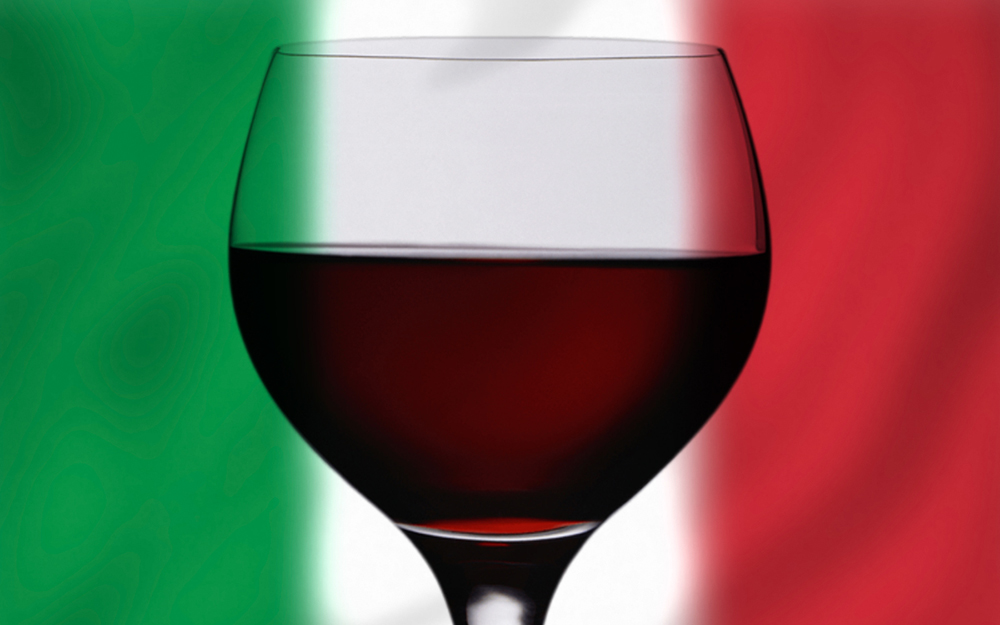
BY RICK RIOZZA
Ciao! Tutti! Hey everyone! Currently we are on an itinerary of Italian delights where we are poking here, prodding there, and generally nudging at the Italian wine landscape tasting some of the vineyard country’s sample of delicious, de-lovely and enchanting vino. La felicità! [lah-fay-lee-chee-TAH] It’s happiness!
Last time we found 1) reading the Italian wine label is fun—not daunting. 2) Millennials continue to be brave in trying new wines from new regions, and 3) Do not pigeon-hole California red wine lovers—more and more of us can love that sanguine-piney leather tart herb-y red vino just as much as we enjoy that fat, smooth, generous fruit from our favorite Cab.
This time, how about these ideas: 1) Let it breathe! There’s something to be said about the sturdiness of an Italian red no matter where it’s grown. Aeration is in and there is no fear in allowing your wine bottle to stand quietly to take in its share of air to blossom beautifully.
For example, during the last BNP Paripas Open here at Indian Wells, I picked up : an inexpensive ($12) bottle of Nebbiolo, produced from the Langhe region of northern Italy. Many of you know the red Nebbiolo grape is famous for the firm, robust and durable Barolo and Barbaresco—which we decant and aerate for hours before dinner. The Langhe region is known for its very light-bodied reds, and one would think that such a wine does not need long aeration. Certainly some light bodied reds will sputter out given too much time in the sun.
Now I caught around three tennis matches from 1pm to around 5, casually sipping down my little Langhe Nebbiolo and continually noticing the changes in nuanced flavor profile of red cherries and raspberries to fresh and dried plums; from earth, coffee, and flowers, to leather, smoke, truffles and violets; and finally, black currants, mint and a good-bye spray of spices. La dolce vita di far niente!—now that’s how to spend an afternoon!
2) Facile! [FAH-chee-lay] Easy! Practically speaking, you can become your neighborhood’s Italian red wine maven by simply understanding only three indigenous grapes; Nebbiolo in and around Piedmonte; Sangiovese in and around Tuscany; and, knowing the difference between the two Montepulicanos—one from Tuscany, the other d’Abruzzo.
Well—we just referred to some of the different types of Nebbiolo, and, we will do so again when our hearts, minds and bellies desire to be filled with warmth, romance, and comfort dining during our quick approaching winter season.
Over the past 5 years, this column has probably discussed more vini toscani than any other wine—fortunato lei!—lucky you! And we continue to look forward to covering plenty of Chianti. But being bantered about the Sangiovese/Chianti circles, is the wine talk of different Sangiovese clones and the area in Tuscany that they are grown.
This can involve long names and titles, tedious discussions at what we thought were going to be a fun Italian wine tasting, and maybe hints of wine snobbery sticking its ugly head in. Allora!—hey’s it’s just wine. We can make this informative, fun, and quite simple.
First off—it’s pretty much all Sangiovese! That includes your Chianti/Chianti Classico, and all the other Tuscan reds listed here. They’re fun to pronounce—give it a try: Brunello di Montalcino [broo-NELL-oh dee mon-tal-chee-noh], Rosso di Montalcino, Vino Nobile di Montepulicano [VEE-noh NOH-bee-lay dee MOHN-teh-pool-CHAH-noh], Rosso di Montepulciano. For great vintages, treat yourself to a Brunello or Vino Nobile; for less than stellar years—the smart move is to buy the Rosso, where the prices are two-thirds less but bang for the buck.
3) Allora!—well then! Call it an interesting identity crisis or just admit it’s a bit confusing. But Montepulciano d’Abruzzo, is—well, from the Montepulciano wine grape variety, and as we’ve stated, Vino Nobile di Montepulciano is a Sangiovese clone. Vino Nobile can only be made in this small piece of Tuscany, and Montepulciano d’Abruzzo, is produced in the eastern province of Italy, the region of Abruzzo on the coast of the Adriatic Sea.
Most Italian vino enthusiasts will certainly have their day tasting through the myriads of Brunellos and Vino Nobiles, with each area crafting their unique taste profile centered around cherries, plums, earth, herbs, leather, mushrooms, smoke, spices, strawberries, tea, tobacco, and violets. There’s an Italian restaurant calling our name right now!—subito!
For a change of pace, let’s taste the Montepulciano d’Abruzzo. This Adriatic coastline vineyard area remains as one of the most rustic but picturesque in all Italy. You’ll still see the buildings of ancient Greek and Roman wineries utilized today! And, as we continue to state—this is yet another Italian region where the wine bespeaks the place.
Even though the Sangiovese & Montepulciano share similar taste profiles such as earth, cocoa, black cherries, black pepper, licorice, olives, plums, spices, and violets—a profound distinction arises: some type of cumulative “blue note” takes the scene. I’ve tried to narrow it down and of course I do get blueberries, both fresh and cooked. But beyond that I’m still getting a beam of blue. Like the “blue note” or “jazz note” in music that causes one pause. Tasting colors—you’ve got to love it.
Currently I’ve been enjoying the most delicious 2015 Niro Montepulciano d’Abruzzo ($18). “Niro” actually means “black” in many Italian dialects, which is proper for this wine’s super noir color. Fabulous flavors of crushed violets, dark bitter chocolate with a touch of coffee grounds and a sprinkling of wet earth. It’s a medium-bodied wine that warms wonderfully with a meal. Notes of Rhubarb compote and sun-ripened blackberries poke through—and, oh—did I mention that blue note? Saluté












































